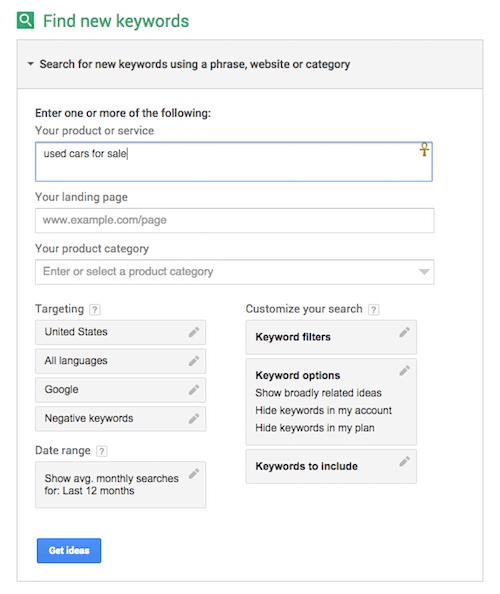Blogging for business is by no means a new phenomenon. It’s been talked about for years now, and I’m sure most of you reading this have tried blogging, whether in your free time or for a business.
But while the craze around blogging has died down as it becomes more acceptable, there are still plenty of people out there skeptical about blogging and its potential benefits. In this post, I’ll show you how to get started so you can be on your way to developing a more advanced and successful digital marketing strategy.
[irp posts=”4956″ name=”How to Create Better Content in Less Time”]
Every business’s site should have a set of main pages that act as the gatekeepers of information. These offer information about your business, its services, and help assure potential customers that they’re choosing the right business based on their needs.
With these pages, you’re doing the bare minimum. For some businesses, that’s fine. But if you’re looking to go above and beyond in order to drive traffic and increase leads, a few pages just isn’t going to cut it. You need other internal pages that link to this content in order to better establish authority with search engines (and users).
You have to start thinking of your site as not just a place for customers, but a resource for anyone and everyone interested in information about your services or products. That’s easier said than done, though, right? Here’s an example:
Wikimotive works primarily with car dealers on automotive SEO campaigns, so let’s say you’re a car dealer that’s looking for a way to get more traffic, boost rankings, and get more high quality leads. This is how you’d start:
Create a List of Your Products and Services
Creating a list of your products and services will give you a good look at what you should be promoting and will allow you to figure out exactly what people are searching for in order to find businesses like yours.
Do Keyword Research
Using the Adwords Keyword Planner Tool, take your list of products and one by one use them to gather related keywords and search volume. I recommend creating a spreadsheet for this data, as it’s the easiest way to stay organized while doing keyword research.
To get started, simply click “Search for new keywords […]” and enter your product or service in the field labelled “Your product or service.” If your business is local, or you simply want to target a specific location, click the first box under the “Targeting” heading. (For U.S. users, this will be labelled “United States,” but may differ for international users.)
[irp]In the field labelled “Enter a location to target,” type the location and the Keyword Planner should automatically suggest a few locations based on your search. You can be extremely specific with your targeting, so feel free to experiment. (Be sure to also remove the country target before clicking “Save.”
Once you’re ready to see your ideas, click “Get Ideas.” This will send you to a results page that shows overall search data for keywords related to your search, related keyword groups (typically used for quick paid search campaigns), and individual keyword ideas that are related to your original search.
Browse through these and start adding keywords that are contextually informational to your spreadsheet. Informational? What is that?
I break keywords down into two different categories: transactional and informational. Transactional keywords are those that users search when they’re looking to make a purchase. Informational keywords are used when someone is looking for information on a specific topic. Pretty simple.
For example, “used cars for sale” would be considered transactional, while “buying a used car” would be considered informational. You don’t want your blog posts to be centered around transactional keywords because that should be the focus of your main/navigational content. We’ll be linking to the main content from these blog posts in order to supplement that content.
[irp posts=”4781″ name=”Why Your Business Should Focus More on Long Tail Keywords”]
Outline Topics Based on High-Volume Keywords and Get to Work
Now that you’ve got your keyword list, let’s create a few ideas for individual blog posts based on those keywords. For our example of topic that centers around “used cars for sale,” I’d pick the following keywords:
- Best Used Cars
- Buying a Used Car
- Best Used Car Deals
- Used Car Valuations
- Certified Used Cars
From here, you want to develop an idea around each of these items. Think about the information people might be looking for when searching for these keywords and try to answer some of the questions you anticipate they’d ask. Here are the posts I’d write in this situation:
- 10 Best Used Cars to Buy in 2015 – I’d gather information from all available sources in order to give readers an idea of the best used cars available in 2015. I’d base this list purely on reliability and overall value, as this is what car buyers think of as “best.”
- Buying a Used Car: 5 Things to Consider – To help consumers searching for tips about the used car buying process, I’d list five of the most important things they should take into account when buying a used car, including reliability, depreciation, mileage, and ownership history.
- The Best Used Car Deals of 2015 – While somewhat similar to our “best used cars” post, the best used car deals is purely based on finding vehicles that offer the best value. Typically this means cars that allow you to save versus buying new.
- How are Used Car Valuations Determined? – In this post, I’d explain exactly how dealerships determine the value of used cars when selling and appraising trade-ins. This will not only inform users of the process, but give them a little peace of mind should they be looking to trade in a vehicle or buy one.
- What Makes Certified Used Cars Special – This is something a lot of car buyers probably wonder, and it’s our job to inform them. I’d write about the evaluation process for most major brands, and the types of extra work that goes into “certifying” a used car.
Create a Blog Schedule
Now that we’ve got a few posts completed, let’s work on creating a schedule for blogging. This will not only help you or your organization stay consistent with content efforts, but will also help you stay organized with topics and other focuses. Here’s what we need to determine:
- How often you want to blog
- What topics you want to cover
- When you want to cover specific topics
How Often You Want to Blog
How often you want to blog really depends on your resources. If this is something you’ll be handing off to an employee to handle in addition to other work, you may want to only require one or two posts each week. But if you have a dedicated content writer or editor, you’re likely to see better results in less time with a schedule of one post each day.
What Topics You Want to Cover
For our car dealer example, they should be covering a variety of topics in order to better compete for a variety of search terms related to their business. New cars, used cars, car loans, service, and repairs are probably the most basic, and you should have keyword sets and topics ready for each of these.
When to Cover Specific Topics
If you want to stay organized, it’s a good idea to focus on certain topics during certain times. So if one week you want to focus on used cars and the next focus on new, you’ll have an idea of what’s coming up and can plan ahead accordingly. If you have a lighter blog schedule, it’s a good idea to focus on one topic for an entire month before switching the focus.
You may also want to cover some topics based on the time of year. So if you know the new models are coming in around April of next year, plan on writing about them in March to prepare for that.
[irp posts=”4822″ name=”Your Content Will Suck at First, and That’s OK”]
Conclusion
As long as you follow these steps, blogging for business should be a breeze. A lot of work goes into the production of great blog content, but as long as you’re committed and consistent you should have no problem keeping up in order to get results.

